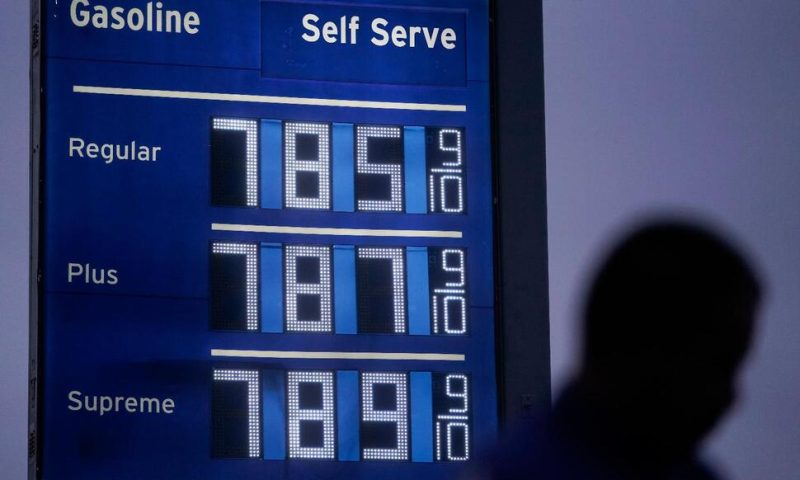Oil companies were swimming in record profits the last few months.
NEW YORK — Oil companies swam in record profits over the last few months at a time when Americans struggled to pay for gasoline, food and other basic necessities.
On Friday, Exxon Mobil booked an unprecedented $17.85 billion profit for the second quarter and Chevron made a record $11.62 billion. The sky-high profits come one day after the U.K.’s Shell shattered its own profit record.
Soaring energy prices have rattled consumers and become a political flash point. Last month, President Joe Biden said that “Exxon made more money than God this year. ”
Consumers are facing high fuel prices not just at the pump, but soaring energy prices are being baked into delivery costs, which is driving up the cost of everything from apples to toilet paper.
Inflation is already changing where Americans go and what they eat. It’s also changing the way they consume energy.
Two-thirds of Americans changed their driving habits and lifestyle, with the vast majority choosing to drive less or combine errands, said AAA spokesman Andrew Gross. Among thowse surveyed by AAA, 2% said they bought an electric vehicle since March, he said.
“They have really altered their lifestyles to cope with these high prices,” Gross said.
Exxon, based in Irving, Texas, increased its oil and gas production as crude prices hovered above $100 a barrel. Revenue at Exxon skyrocketed to $115.68 billion, up from $67.74 billion during the same quarter last year.
Natural gas and liquefied natural gas (LNG) prices are also elevated due to Russia’s invasion of Ukraine and ensuing sanctions against Russia, a major supplier of natural gas. Many European nations have been scrambling for alternatives to Russian natural gas, and have been competing for boatloads of LNG, driving up prices for natural gas both globally and in the U.S. Inflation in Europe has also been surging, including soaring costs for energy.
Surging prices have been a boon for investors, including energy executives of whom receive a massive share of compensation through company shares. Exxon earned $4.21 per share, exceeding analyst expectations of $4.02 per share, according to analysts polled by Factset. Chevron earned $5.95 per share, exceeding analyst expectations of $5.16 per share.
Shares of Exxon Mobil Corp. jumped 4% at the opening bell Friday and Chevron rose 8%
Exxon CEO Darren Woods attributed the company’s success to its investments in oil and gas fields in Guyana and the Permian Basin, as well as its investments in liquefied natural gas, which has been in high demand globally.
“Given the long investment cycle times, growing supply will not happen overnight,” said Woods in a conference call Friday.
Gasoline prices rose particularly quickly during the quarter because there are fewer refineries operating in the U.S. than before the pandemic, which drove energy consumption down severely.
Exxon plans to increase refining capacity by about 250,000 barrels per day in the first quarter of 2023 by expanding its Beaumont Refinery. That represents the industry’s largest single capacity addition in the U.S. since 2012, the company said.
To alleviate Europe’s energy crisis, Exxon sees potential for fracking and unconventional gas in Germany, and “there’s an opportunity where certainly ExxonMobil could play a key role,” Woods said.
Exxon also plans to increase its exports of LNG to Europe. Golden Pass, its LNG export facility under construction in Port Arthur, Texas, will increase LNG exports from the Gulf Coast by 20% when it starts up in 2024, he said.
“Bringing more LNG supplies to help offset some of the Russian gas going into Europe will be another really critical step forward in diversification of supplies for Europe,” Woods said.
Climate scientists and residents who live near Gulf Coast LNG export facilities warn that expanding fossil fuel infrastructure could exacerbate disasters caused by climate change.
Exxon expects to increase oil-equivalent production in the Permian Basin by 25% this year compared to 2021 and to eliminate routine flaring in the Permian by the end of the year.

